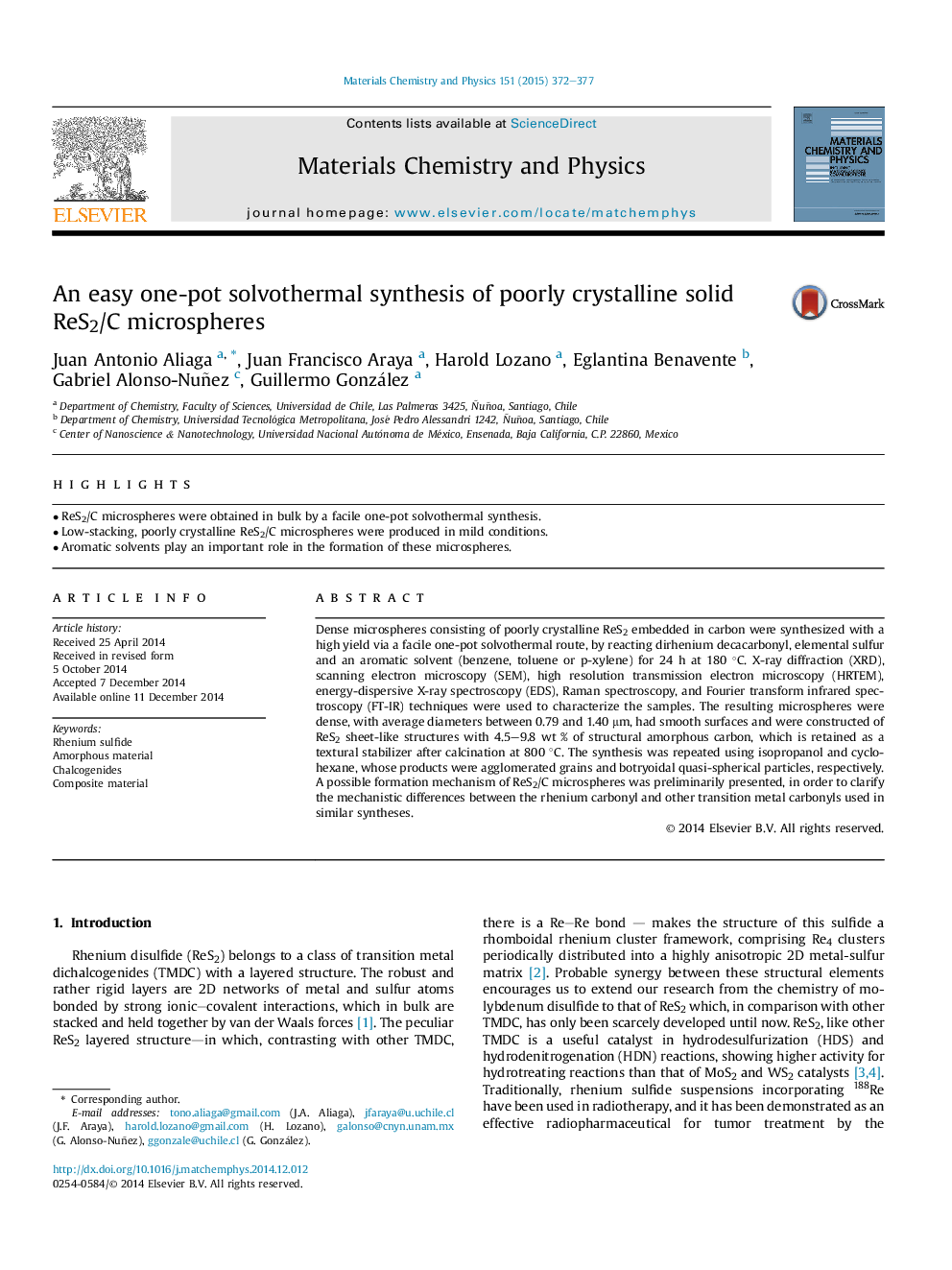| Article ID | Journal | Published Year | Pages | File Type |
|---|---|---|---|---|
| 1521645 | Materials Chemistry and Physics | 2015 | 6 Pages |
•ReS2/C microspheres were obtained in bulk by a facile one-pot solvothermal synthesis.•Low-stacking, poorly crystalline ReS2/C microspheres were produced in mild conditions.•Aromatic solvents play an important role in the formation of these microspheres.
Dense microspheres consisting of poorly crystalline ReS2 embedded in carbon were synthesized with a high yield via a facile one-pot solvothermal route, by reacting dirhenium decacarbonyl, elemental sulfur and an aromatic solvent (benzene, toluene or p-xylene) for 24 h at 180 °C. X-ray diffraction (XRD), scanning electron microscopy (SEM), high resolution transmission electron microscopy (HRTEM), energy-dispersive X-ray spectroscopy (EDS), Raman spectroscopy, and Fourier transform infrared spectroscopy (FT-IR) techniques were used to characterize the samples. The resulting microspheres were dense, with average diameters between 0.79 and 1.40 μm, had smooth surfaces and were constructed of ReS2 sheet-like structures with 4.5–9.8 wt % of structural amorphous carbon, which is retained as a textural stabilizer after calcination at 800 °C. The synthesis was repeated using isopropanol and cyclohexane, whose products were agglomerated grains and botryoidal quasi-spherical particles, respectively. A possible formation mechanism of ReS2/C microspheres was preliminarily presented, in order to clarify the mechanistic differences between the rhenium carbonyl and other transition metal carbonyls used in similar syntheses.
